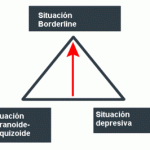Mental health articles
OF mental health care and mentally ill
Assessing Psychopathology Across Cultures
Assessing Psychopathology Across Cultures
To study mental illness across cultures, one must first be able to identify and then classify mental illness in different cultural contexts (see later section for assessment in clinical treatment). This is one of the most challenging aspects of studying psychopathology across cultures. The most widely used nosological systems were developed in Europe (ICD-9) and North America (DSM-IV) and have been criticized for their Western cultural assumptions. These systems are fraught with shortcomings, even when applied in Western settings. Low reliability, poor validity, and high rates of comorbidity (i.e., the co-occurrence of presumably distinct disorders) are of highest concern.
Additional challenges arise when these systems are used with non-Western cultural and ethnic groups. First, because these systems rely primarily on clinical diagnosis, they may obscure cultural differences and/or similarities in specific symptoms. Thus, cultural differences in prevalence rates of clinical depression, for example, may belie cultural differences in the specific symptoms of depression, such as depressed mood, loss of energy, and sleep problems. Second, behavior that is defined as ‘‘abnormal’’ by these Western classif ication systems may fall well within the realm of normal behavior in other cultural contexts. In Puerto Rico, for instance, dissociative states are considered normal aspects of religious and spiritual practices, whereas in many Western contexts, they are considered symptoms of mental illness.
Third, abnormal behaviors in non-Western cultural contexts may be excluded in hese classification systems. In an attempt to address this last issue, DSM-IV includes an appendix that lists ‘‘culture-bound syndromes,’’ or disorders that occur in specific cultural settings only. For example, ‘‘koro’’ is a disorder primarily found in parts of Southern Asia (Taiwan, Indonesia, Malayasia, Borneo, and Southern China) in which males harbor an ‘‘obsessive fear that their penises will withdraw into their abdomens.’’ More recently, specific disorders found primarily in Western cultures have also been considered ‘‘culturally bound.’’ They include ‘‘anorexia nervosa,’’ in which individuals (typically females) have an obsessive concern with their weight, and ‘‘multiple personality disorder,’’ in which one person is thought to have multiple personalities that assume control over that person’s behavior.
Although the inclusion of ‘‘culturally bound syndromes’’ into the DSM-IV has been hailed as a major step toward acknowledging the influence of culture on psychopathology, it has also encountered much criticism. This debate will be discussed at greater length later in the chapter. Despite these problems, Western classif ication systems are widely used in cultural studies of psychopathology due to the lack of alternative non-Western classification systems. Researchers have employed different methods for assessing psychopathology across cultures. These include self-report inventories (e.g., rating scales, personality instruments) and interview schedules (e.g, structured vs. open-ended).
Post Footer automatically generated by wp-posturl plugin for wordpress.
More from my site
Tags: psychopathology







Leave a Reply